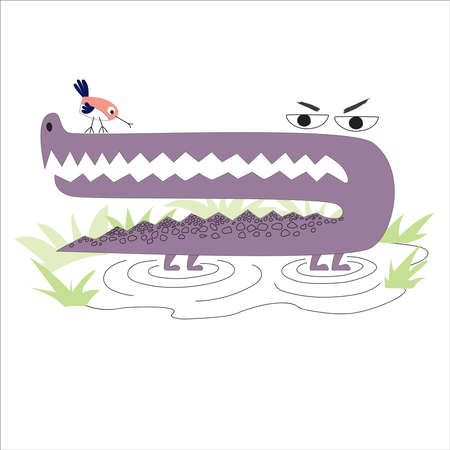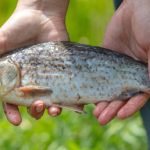1. Understanding the Importance of Catch and Release
For anglers across the U.S., Northern Pike and Muskellunge (commonly known as Muskie) represent some of the most exciting freshwater game fish to pursue. These apex predators are known for their size, power, and aggressive strikes, making them a favorite among sportfishing enthusiasts. However, because both species grow slowly and don’t reproduce in high numbers everywhere, its crucial to practice catch and release to ensure healthy populations for future generations.
Why Catch and Release Matters
Catch and release isnt just a nice idea—its a key part of sustainable fishing. When done properly, it helps maintain fish populations, supports local ecosystems, and ensures that future anglers can enjoy the thrill of landing a trophy pike or muskie. These species are particularly vulnerable because:
- Slow growth rates: Both pike and muskie take several years to reach maturity.
- Low reproduction in certain waters: Not all bodies of water support natural reproduction effectively.
- Trophy-sized fish are breeders: Larger fish are often the best breeders, so keeping them can impact future generations.
Benefits of Catch and Release for Northern Pike & Muskie
| Benefit | Description |
|---|---|
| Population Stability | Releasing fish helps sustain numbers in heavily fished areas. |
| Trophy Potential | More large fish survive to be caught again—supporting a quality sportfishing experience. |
| Ecosystem Balance | Pike and muskie help control smaller fish populations, keeping aquatic systems healthy. |
| Conservation Legacy | Protects the species for future generations of anglers. |
The Role of Anglers in Conservation
As an angler, you play a major role in protecting these incredible game fish. Choosing to practice catch and release—especially when targeting trophy-size northern pike or muskie—is one of the best ways to give back to the sport. Its not only about letting the fish go; its about doing it the right way to maximize survival chances. Well explore those techniques in upcoming sections.
Quick Tip
Always check your state’s fishing regulations before heading out. Some areas may have mandatory release rules during certain seasons or size limits that protect spawning fish.
Bottom Line
Catching a big muskie or pike is an unforgettable moment—but releasing it properly ensures someone else gets that same experience down the line. That’s what makes catch and release not just good practice, but great tradition.
2. Gear Selection for Responsible Handling
When practicing catch and release for Northern Pike and Muskie, using the right gear can make a huge difference in reducing stress and injury to the fish. These powerful predators require strong yet gentle equipment that allows anglers to land them quickly and handle them safely. Below are some tips on choosing the best rods, lines, nets, and hooks for ethical catch and release.
Rods and Reels
Use medium-heavy to heavy rods with fast action tips. These provide enough backbone to control large fish without exhausting them during the fight. Pair your rod with a quality reel that has a smooth drag system—this helps prevent sudden jerks that can harm the fish.
Fishing Line
Braided line is often preferred because of its strength and low stretch, allowing you to set the hook quickly and reduce fight time. For Northern Pike and Muskie, 50-80 lb test braided line is common. Always use a fluorocarbon or wire leader to prevent bite-offs.
Nets
Using the right net can significantly reduce damage to a fish’s slime coat and fins. Look for rubber-coated or knotless mesh nets that are wide and deep enough to cradle large fish comfortably.
| Type of Net | Advantages |
|---|---|
| Rubber-Coated Mesh | Minimizes slime loss and fin damage; easy to clean |
| Knotless Mesh | Reduces abrasion; gentler on scales |
Hooks
Single hooks or barbless trebles are better choices for catch and release. They’re easier to remove, which shortens handling time and lessens injury risk. If youre using lures with treble hooks, consider swapping them out for inline single hooks or pinching down the barbs.
| Hook Type | Benefits |
|---|---|
| Barbless Treble | Easier removal; reduces tissue damage |
| Inline Single Hook | Simpler hooksets; safer for fish handling |
Quick Tips:
- Keep hook removers or long-nose pliers handy to speed up unhooking.
- A jaw spreader can help with safe access when removing deeply hooked lures.
- A Boga Grip or similar tool can aid in controlling larger fish during handling, but always support their body horizontally when lifting out of the water.
Selecting the right gear not only improves your fishing success—it plays a big role in ensuring these incredible fish survive to fight another day.

3. Best Practices for Catching with Care
When targeting Northern Pike and Muskie, how you handle the hook-up and fight plays a big role in their survival after release. These toothy predators are tough fighters, but they can still suffer stress and injury if not handled properly. Here are some angler-friendly tips to help you catch with care.
Keep the Fight Short
The longer the battle, the more exhausted the fish becomes. Try using gear that matches the size of the fish to reduce fight time. A strong rod and reel with a smooth drag system helps bring the fish in quickly without overexertion.
Use Proper Tackle
Choosing the right tackle not only improves your chances of landing the fish but also reduces harm. Heres a quick guide:
| Tackle Type | Recommendation |
|---|---|
| Hooks | Single, barbless or circle hooks to minimize injury and ease removal |
| Line | Braided or heavy fluorocarbon line (50–80 lb test) to prevent break-offs |
| Leaders | Steel or heavy fluorocarbon leaders to avoid bite-offs from sharp teeth |
Be Ready Before You Hook Up
Preparation is key. Have your tools ready—pliers for hook removal, gloves if needed, and a large rubber mesh landing net. This reduces handling time and stress on the fish once its brought in.
Avoid Overplaying the Fish
If you feel like the fish is tiring out too much, try to land it sooner rather than later. A completely exhausted fish has a much lower chance of surviving after release.
Quick Tip:
If youre fishing in warm water conditions (above 70°F), be extra cautious—fish tire faster and recover slower in higher temps.
Maintain Control During the Fight
Keep steady pressure on the fish but avoid jerking or sudden movements that could cause internal injuries. Let your rod do most of the work by maintaining a consistent bend and controlling the direction of the fish.
Use Nets Wisely
A rubber-coated landing net is ideal—it protects the fishs slime coat and reduces fin damage. Avoid nylon nets, which can tangle and injure delicate gill structures.
Pro Tip:
A cradle-style net works great for larger muskies—its easier on their bodies and lets you control them safely during unhooking.
Following these simple practices not only helps preserve these iconic gamefish for future generations but also makes your experience on the water safer and more rewarding.
4. Handling and Releasing Fish Safely
Properly handling and releasing Northern Pike and Muskie is key to ensuring their survival after the catch. These large, toothy predators are sensitive to stress and injury, so using the right techniques can make a big difference. Below are some practical tips to help you handle these fish with care.
Keep the Fish in the Water
One of the most important things you can do is keep the fish in the water as much as possible. Removing them from their environment causes stress and increases the risk of injury. Use a large rubber-coated landing net to contain the fish while still in the water. This reduces slime loss and minimizes physical damage.
Use the Right Tools
Having the proper tools on hand will make the release process smoother and safer for both you and the fish. Heres a quick reference guide:
| Tool | Purpose |
|---|---|
| Long-nose pliers or hook removers | Safely remove hooks from deep or hard-to-reach areas |
| Boga grip or jaw spreader | Hold open mouth gently for safe hook removal |
| Kneeling pad or boat mat | If handling out of water, protects fish from hard surfaces |
Support Their Body Properly
If you must lift a Pike or Muskie out of the water for a quick photo or hook removal, always support its body. Use one hand under the belly and another near the tail. Avoid holding them vertically by the jaw, as this can damage their internal organs.
Avoid Prolonged Air Exposure
The less time a fish spends out of water, the better its chances of survival. Aim to keep air exposure under 15 seconds whenever possible. Prepare your camera and tools ahead of time to speed up the process.
Position for a Smooth Release
When its time to let your catch go, gently lower it back into the water. Hold it upright by supporting its belly and tail until it begins to swim away on its own. If needed, move it slowly back and forth in the water to help oxygenate its gills.
Treating every catch with care helps preserve healthy fish populations for future generations of anglers. By following these simple steps, youre doing your part in protecting two of North Americas most iconic freshwater gamefish.
5. Post-Release Monitoring and Behavior
After youve successfully released a Northern Pike or Muskie, your job isnt quite done yet. Monitoring the fish as it swims away is a key step in ensuring it survives and thrives after release. Understanding what to look for can help you evaluate whether your release technique worked well or if you need to improve it next time.
What to Look For After Release
Once the fish slips out of your hands and back into the water, pay close attention to its behavior. A healthy, recovering fish will show certain signs that indicate its regaining strength and able to fend for itself again.
Signs of a Successful Release
| Behavior | What It Means |
|---|---|
| Strong tail kicks | The fish is actively swimming away with power, showing good recovery. |
| Maintains upright position | The fish is balanced and not rolling over, indicating proper orientation and health. |
| Steady swimming into deeper water | The fish seeks cover or deeper areas, which is a natural survival instinct. |
Warning Signs to Watch Out For
| Behavior | Possible Issue |
|---|---|
| Floating on surface or upside down | The fish may be suffering from stress or barotrauma and may need more recovery time. |
| Lack of movement or drifting | This could signal exhaustion or internal injury. Try gently moving the fish back and forth in the water to help oxygenate its gills. |
| Panic swimming in circles | This might indicate disorientation; give it space and observe from a distance. |
How Long Should You Monitor?
A good rule of thumb is to watch the fish for at least 30 seconds after release. If its swimming naturally and disappears into deeper water, youre likely in the clear. If its struggling, continue gentle support until it recovers.
Tips to Improve Release Survival Next Time
- Use barbless hooks to minimize injury.
- Keep the fish in water as much as possible during handling.
- Avoid touching the gills or squeezing the body tightly.
- If you use a net, choose one thats rubber-coated to protect the slime layer.
Your careful attention after releasing a Northern Pike or Muskie can make all the difference. By recognizing recovery signs and acting quickly if something seems off, youre doing your part to ensure these amazing fish continue to thrive for future generations of anglers.


